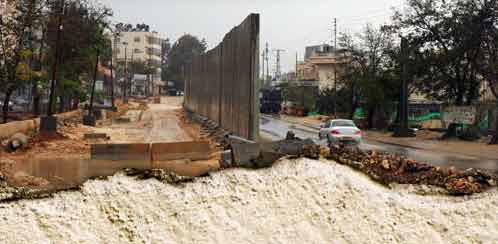Israeli Policy in East Jerusalem under the new mayor Nir Barkat
 ‘Jerusalem Unification Day’: the Association for Civil Rights in Israel (Acri) issues a Wake Up Call: Jerusalem is not United with a flash presentation and a report 200 Days of Grace: Israeli Policy in East Jerusalem in the Nir Barkat Era.
‘Jerusalem Unification Day’: the Association for Civil Rights in Israel (Acri) issues a Wake Up Call: Jerusalem is not United with a flash presentation and a report 200 Days of Grace: Israeli Policy in East Jerusalem in the Nir Barkat Era.
Six months ago, Nir Barkat took office as mayor of Jerusalem, pledging to change the order of priorities in the city. Barkat’s plan, presented during the election campaign, included his vision for East Jerusalem: “Taking responsibility for what is happening on the east side of the city. No more “Wild East”. Investment in planning, development, and improving the status of residents, while increasing lawenforcement and supervision.” Equality of opportunities in education and housing would be enhanced, continued Barkat, while fully realizing the potential of each pupil, building affordable housing, and ensuring that the public infrastructure meets the needs of the diverse population. Barkat specifically cited the problem of sewage in East Jerusalem and the need to invest in it. Barkat repeated these promises upon taking office, declaring that he remains “committed to preserving the status quo in matters of religion in Jerusalem and protecting the dignity of all residents of the city. This is the way of Jerusalem. This is how it should be where social diversity is an inalienable part of the city.” During his six months or so in office, Barkat and his staff have repeated these statements, but even though two hundred days of grace have elapsed, not just one hundred, the actions of City Hall under Mayor Nir Barkat show no fundamental change with respect to development of or investment in East Jerusalem.
The section heads after the Introduction give the flavour of the report:
* Stepped-up Home Demolitions
* No Progress on Housing Solutions
* Increased Construction in the Settlements
* Ongoing Discrimination in Budgets
* The Scandalous Shortage of Classrooms Continues
* Continued Neglect of Infrastructure and Services
* Racist Remarks by the Mayor
Read more (the English follows the Hebrew in the report).
This report is accompanied by another, The State of Human Rights in East Jerusalem: Facts and Figures (the English translation begins on p.32)
